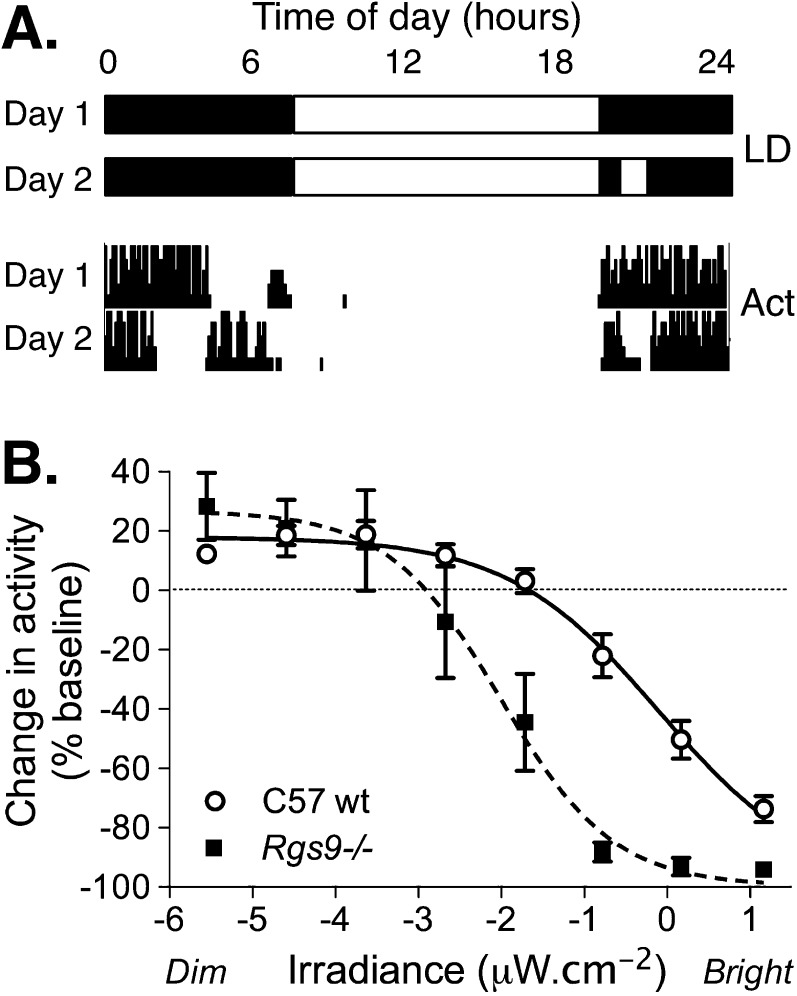Figure 2.
Wheel-running activity in Rgs9−/− mice. Mice will voluntarily use a running wheel in their home cage during the night when they are active (dark phase of the day). Bright light acutely suppresses wheel running in a dose-dependent manner. Wheel running activity was quantified against time for singly housed mice maintained under a 12-hour light:12-hour dark cycle. On test days, lights were turned on during the active or dark phase of the day, and change in wheel running activity was calculated against a preceding baseline day for individual animals for a given treatment. (A) Illustration of the light cycle protocol and corresponding recorded activity are shown for a baseline (Day 1) and test day (Day 2). (B) The effect of light on activity is calculated as a percentage of baseline and plotted against irradiance. The mean ± SEM change in activity is shown for wild-type (n = 15; circles) and Rgs9−/− (n = 12; squares) mice at 8 light levels.

